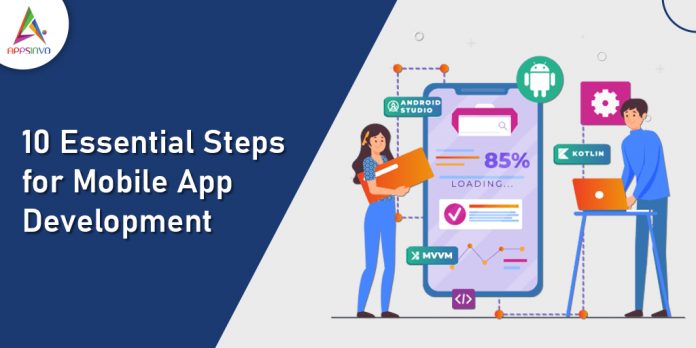Building a successful mobile app requires several well-planned and executed steps. Here are ten key steps to help you navigate the mobile app development process.
1. Identify the problem and define the app’s purpose.
The first step in developing a mobile app is to clearly define the problem or need that it will address. Identify the target audience, their pain points, and how your app can help. This will assist you in developing a focused and user-centric application.
2. Conduct marketing research.
Perform a thorough research on the competition and analyze the current mobile app landscape. Understand the features and functionalities of similar apps, as well as their strengths and weaknesses, and determine your app’s unique selling proposition (USP). This research will help you make more informed decisions and gain a competitive advantage.
3. Describe the app’s features and functionalities.
Create a comprehensive list of features and functionalities based on your market research and the app’s intended purpose. Prioritize essential features and consider the minimum viable product (MVP) to ensure a quick launch and user feedback.
4. Select the appropriate technology stack.
Determine which mobile platforms you want to target (e.g., iOS, Android, or both) and choose the appropriate technology stack. This includes selecting the programming language, frameworks, and tools that will be used to build the application. Consider development costs, maintenance, and your development team’s expertise.
5. Design the User Interface (UI) and User Experience (UX).
Spend time designing an intuitive and visually appealing user interface. Consider the entire user experience, which includes navigation, information architecture, and interaction patterns. Collect feedback from potential users and iterate on the design until you reach your desired outcome.
6. Develop the app.
Once the design and technical decisions have been made, the actual development process can begin. This may include configuring the development environment, writing code, integrating third-party libraries and APIs, and implementing the app’s features and functionalities.
7. Testing and Debugging
Thoroughly test the app to identify as well as correct any bugs, compatibility issues, or performance issues. This includes performing unit, integration, and end-to-end testing. Collect feedback from beta testers and make any necessary adjustments.
8. Prepare for App Store Submissions
Ensure that your app adheres to the guidelines and requirements of the relevant app stores. This includes creating the app’s metadata (title, description, and images), obtaining the required certificates and licenses, and preparing the app for submission.
9. Introduce and promote the app.
Develop an effective marketing strategy that the app after approval and publication. This could include using social media, search engine optimization (SEO), app store optimization (ASO), and other channels to reach out to your target audience and increase downloads.
10. Iterate and improve consistently.
The process of creating mobile apps is ongoing. Gather user feedback on a regular basis, monitor app performance metrics, and constantly update and improve the app to meet user needs and market trends. This will enable you to maintain user engagement and stay ahead of the competition.
Following these 10 essential steps will boost your chances of developing a successful and user-friendly mobile app that meets the needs of your target audience.
Given Below are Some Mobile App Development Related Blogs:- |













[…] post 10 Essential Steps for Mobile App Development appeared first on Appsinvo […]